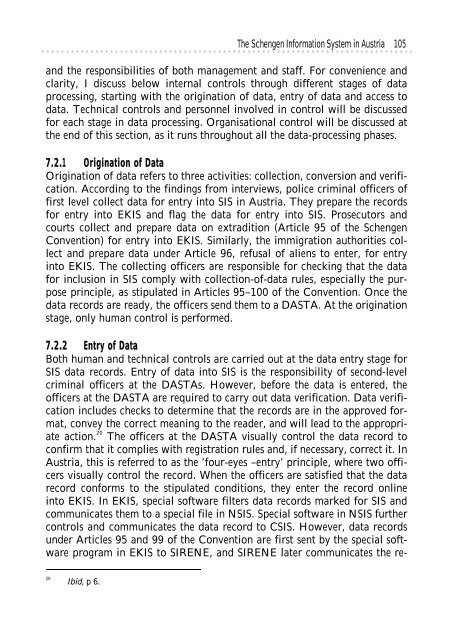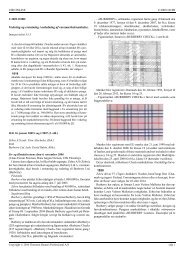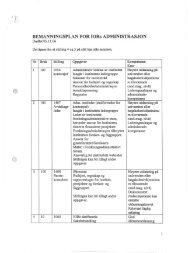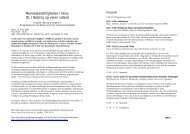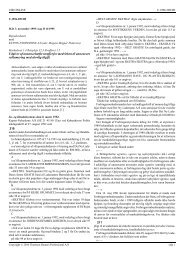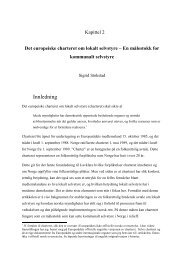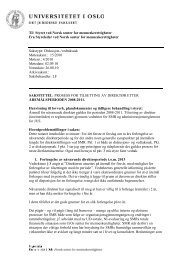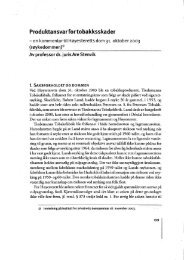Lee A. Bygrave (red.) YULEX 2002 - Universitetet i Oslo
Lee A. Bygrave (red.) YULEX 2002 - Universitetet i Oslo
Lee A. Bygrave (red.) YULEX 2002 - Universitetet i Oslo
You also want an ePaper? Increase the reach of your titles
YUMPU automatically turns print PDFs into web optimized ePapers that Google loves.
............................................................................<br />
The Schengen Information System in Austria 105<br />
and the responsibilities of both management and staff. For convenience and<br />
clarity, I discuss below internal controls through different stages of data<br />
processing, starting with the origination of data, entry of data and access to<br />
data. Technical controls and personnel involved in control will be discussed<br />
for each stage in data processing. Organisational control will be discussed at<br />
the end of this section, as it runs throughout all the data-processing phases.<br />
7.2.1 Origination of Data<br />
Origination of data refers to three activities: collection, conversion and verification.<br />
According to the findings from interviews, police criminal officers of<br />
first level collect data for entry into SIS in Austria. They prepare the records<br />
for entry into EKIS and flag the data for entry into SIS. Prosecutors and<br />
courts collect and prepare data on extradition (Article 95 of the Schengen<br />
Convention) for entry into EKIS. Similarly, the immigration authorities collect<br />
and prepare data under Article 96, refusal of aliens to enter, for entry<br />
into EKIS. The collecting officers are responsible for checking that the data<br />
for inclusion in SIS comply with collection-of-data rules, especially the purpose<br />
principle, as stipulated in Articles 95–100 of the Convention. Once the<br />
data records are ready, the officers send them to a DASTA. At the origination<br />
stage, only human control is performed.<br />
7.2.2 Entry of Data<br />
Both human and technical controls are carried out at the data entry stage for<br />
SIS data records. Entry of data into SIS is the responsibility of second-level<br />
criminal officers at the DASTAs. However, before the data is ente<strong>red</strong>, the<br />
officers at the DASTA are requi<strong>red</strong> to carry out data verification. Data verification<br />
includes checks to determine that the records are in the approved format,<br />
convey the correct meaning to the reader, and will lead to the appropriate<br />
action. 20 The officers at the DASTA visually control the data record to<br />
confirm that it complies with registration rules and, if necessary, correct it. In<br />
Austria, this is refer<strong>red</strong> to as the ’four-eyes –entry’ principle, where two officers<br />
visually control the record. When the officers are satisfied that the data<br />
record conforms to the stipulated conditions, they enter the record online<br />
into EKIS. In EKIS, special software filters data records marked for SIS and<br />
communicates them to a special file in NSIS. Special software in NSIS further<br />
controls and communicates the data record to CSIS. However, data records<br />
under Articles 95 and 99 of the Convention are first sent by the special software<br />
program in EKIS to SIRENE, and SIRENE later communicates the re-<br />
20 Ibid, p 6.


